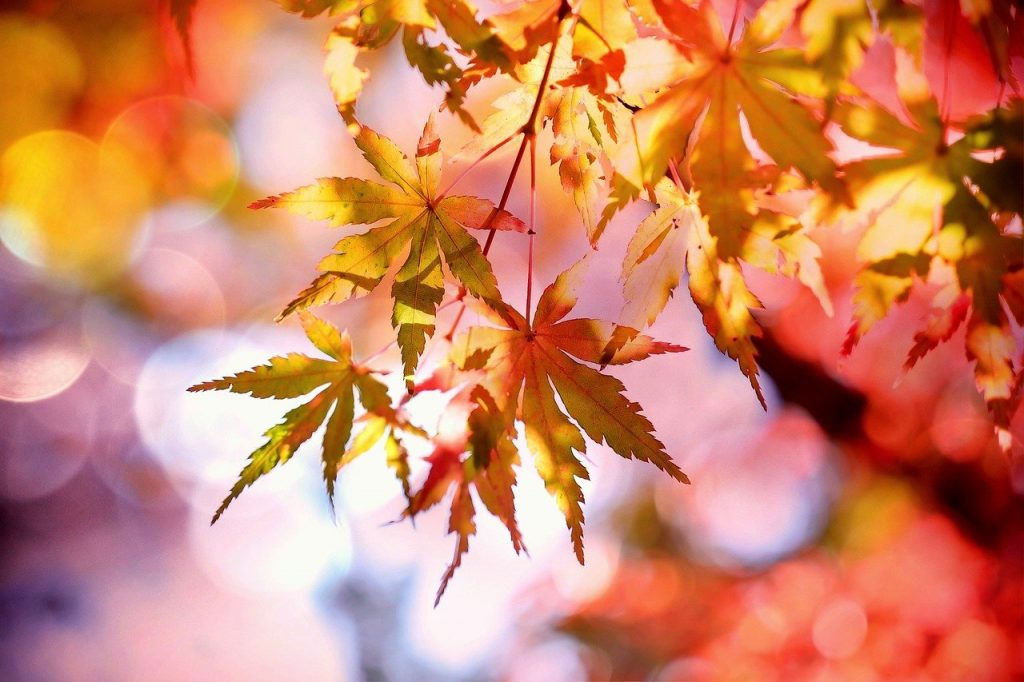
Are you feeling that chill in the air yet? Cooler morning and leaves starting to change color can only mean one thing. That fall is here and it is time to fertilize your lawn!
When you fertilize your lawn in the fall, think of it like a bear filling its belly before it heads into a cozy cave to hibernate for the winter. Like a bear, your lawn will hibernate in the cold winter months. Thus, you want to send it off in the best shape possible to promote a better, greener spring growth!
Why You Should Fertilize Your Lawn This Fall
The summer months can be harsh on your lawn. Between the stresses of heat and omore frequent traffic, your lawn may need some recovery. The best way to help your lawn recover and prepare for the winter is to fertilize it!
In fact, when you fertilize your lawn in the fall, you will reap the benefits next spring. Fertilizing your lawn in the fall helps the grass to grow stronger roots. Thus, giving it a base to come back in the spring and thrive.
Fall fertilizing also helps minimize the damage that winters and diseases can have on your grass. Most importantly, fertilizer provides a source of energy for the roots. This is what will help with spring green-up, which will help you enjoy a greener lawn that much sooner.
When Should You Fertilize Your Lawn in the Fall?
The best time to fertilize can depend on your specific climate. Typically, September and October are the best months to apply fall fertilizer. The most important factor is that you make sure to complete your fall fertilization 2-3 weeks before the ground freezes. Thus, ensuring that your lawn reaps the full benefits of the fertilizer and avoids winter damage.
Fertilize your Lawn in the Fall: September
During fall, September is the best time to fertilize your lawn. The grass is recovering from a long, hot summer and may be coming out of a drought-induced dormancy. Thus you should give your lawn a boost of nutrients to push blade growth.
September is often ideal because the weather is still warm enough for the ground to absorb the nutrients, but there are fewer weed seedlings gettings in the way. Additionally, this is a good time for general end of summer yard maintenance.
Fertilize your Lawn in the Fall: October
You may wonder if it is too late to fertilize your lawn in October. In the southern U.S., mid-October is a perfect time to fertilize your lawn. So you haven’t missed your window! Since you need to apply the fertilizer a few weeks before the ground freezes, just check your forecast. You also want to make sure you don’t fertilize right before a heavy rain. In the south, this means that October is often a safer bet than September!
Fertilize your Lawn in the Fall: November
We’ve covered the ins and outs of how to fertilize your lawn in the fall in September and October. But what about the month that straddles fall and winter? Is it too late to fertilize your lawn in November?
Timing is really everything when it comes to late fall fertilization. So yes, depending on your turf and climate, you may still fertilize in November. You do want to wait until the grass has stopped growing and rarely needs mowing. However, you don’t want to wait so long that the ground freezes.
How to Fertilize Your Lawn in the Fall
Hopefully, you now have a better idea of when you should plan to fertilize your lawn in the fall. Now comes the easier part – actually fertilizing your lawn! First, mow your lawn to give it a fresh start. Then it’s time to apply the fertilizer.
Choose a fertilizer that works best for your turf and follow the instructions. For the best coverage, use a walk-behind spreader. Alternatively, a crank spreader will work just as well.
Using a spreader will ensure that your fertilizer is spread evenly and consistently across your lawn. But most importantly, spreaders ensure you don’t miss any spots.
Never fertilize lawns before heavy rain to avoid runoff, so always check the forecast before you start. And if it recently rained, let the grass blades dry before fertilizing. If you can, fertilize your lawn in the morning. This enables you to take advantage of cooler temperatures and morning dew to reduce the risk of burning the grass. Plus, as you spread the fertilizer and water it in, the nutrients will best reach roots to be absorbed quickly.
Fertilizing Tip: Base It On Your Grass Variety
When and how often you should apply fertilizer to your lawn depends on the type of grass you grow. Grasses need nitrogen and other nutrients during their seasons of active growth, and they grow best with an even supply. Thus, you need to time your fall fertilizing based on your climate and turfgrass variety.
Warm-season grasses, such as Bermuda grass and Zoysia grass, grow rapidly in warm weather. Generally, you need to feed warm-season grasses from late spring to early fall. However, take care not to fertilize too late in the fall. Otherwise, the grass is likely to be less hardy against cold weather and will be more susceptible to winter injury.
Cool-season grasses, such as Kentucky bluegrass and tall fescue, grow most vigorously in the cooler months of fall and spring. In mild-winter climates, such as the deep South and southern California, these cool-season grasses can grow throughout winter. However, fall is still a very important time to feed cool-season grasses. This feed keeps them growing longer into cool weather and proves the reserves needed for quick green-up in spring.
Takeaways
As you prepare to fertilize your lawn in the fall, remember these top tips. Take note of the weather forecast, so you can fertilize 2-3 weeks before the ground starts to freeze. Don’t fertilize right before heavy rain. Know what kind of turf you have, and purchase fertilizer and plan your schedule accordingly. When you fertilize properly in the fall, you’re setting yourself up for a better spring.
